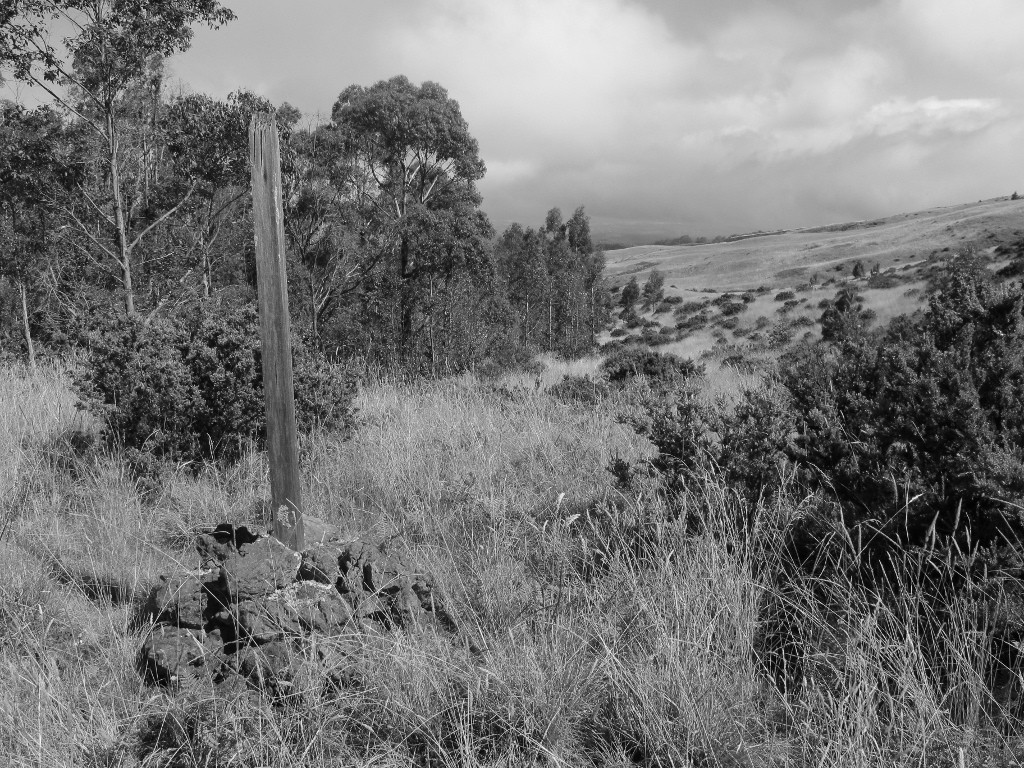Climbing Damage Prompts Partial Closure of Maui Reserve
The state’s Natural Area Reserves System includes some of the most pristine and biologically and geologically unique places. Extractive or potentially destructive uses either require a permit or are prohibited altogether.
In the Lihau section of the West Maui Natural Area Reserve, rock climbers have reportedly defaced rock cliffs by drilling footholds and installing rebar supports. And according to a DOFAW report, these activities have affected threatened and endangered plants, such as Achyranthes splendens (‘Ewa hinahina, also called the Maui chaff flower) and Schiedea menziesii (Hawaiian bonamia or Hawai‘i lady’s nightcap).
“Some individuals of these species are actually growing under the metal holds and steps pounded into dry cliff walls of concern. The only known Hibiscus brackenridgei (Ma‘o hau hele or Aloalo) West Maui population is in danger of trampling or breakage during the hike to the vertical walls for climbing,” it states.
The division asked the Land Board on October 11 to close the cliff areas for up to two years to prevent further harm to the plants.
DOFAW’s Emma Yuen told the board that up until recently, the plants had been pretty well defended by the steep cliffs. Now that a rock climbing community is starting to go up there, the endangered plants are getting trampled, she said.
“It’s not illegal to climb. … It is illegal to drill holes,” she added.
Board member Sam Gon, a scientist who helped survey the NAR in the 1980s, said the cliffs are riddled with caves that contain cultural sites that could also be threatened if the climbing is unchecked.
Wai Yi Ng, vice president of the local rock-climbing non-profit The Arch Project Hawai‘i, testified against the proposed closure and suggested that a special use permit be granted instead to allow climbers to assist DOFAW in taking an inventory of the rare plants, relocating the climbing trail around them, and controlling invasive species. “The climbing community is very interested in this,” she said before asking for a contested case hearing. The board denied her request, but expressed a willingness to work with the climbers on a plan.
Arch co-founder Nate Lim explained that the organization focused on safety and conservation. “I wanted to make sure it’s well known that climbers are equally if not more passionate about the environment than they are about climbing. … None of us is wanting to do something that is illegal,” he said.
Gon replied that he wasn’t saying people shouldn’t be climbing in the reserve, but pointed out that DOFAW’s proposal was based on the observed damage that’s occurred.
The board then unanimously approved the closure for up to two years.
Haleakala Bridle Trail Open to Guided Hikes

Ever since the Land Board terminated an agreement in July 2017 with Haleakala Ranch Company to allow guided hikes on the state’s historic Haleakala Trail that bisects the ranch, the Division of Forestry and Wildlife (DOFAW) has been working with community hiking groups and the ranch on terms of a new access agreement.
The original agreement allowed only two guided hikes a year. It was signed in 2012, when the ranch maintained that it owned the trail.
On October 11, over the objections of David Brown, executive director of Public Access Trails Hawai‘i (PATH), DOFAW sought and received Land Board approval of a new memorandum of agreement with PATH, the ranch, the Sierra Club’s Maui group, and the Department of Land and Natural Resources.
Under the agreement, public use of the trail is limited to scheduled, guided hikes of no more than 20 people. The Sierra Club Maui group would maintain an online reservation system and would schedule a hike once each quarter and on additional days upon request.
In a February 10 letter to the Land Board, Brown objected to the MOA. “The real purpose of the memorandum is to close down Haleakala Trial and not to open it to its owners, the public. Four trips a year of three hours each is 12 hours use a year. This is 0.14 percent of a year. The public owners of Haleakala Trail deserve the full 100 percent use,” he wrote.
It wasn’t until 2014 that the 2nd Circuit Court ruled that the state owned the trail. PATH was the original plaintiff in that case and Brown noted that there is already a court-approved survey of the trail, “and much historic rock work is on it.”
Even so, DOFAW Maui branch manager Scott Fretz told the board at its October meeting that that the trail is “impossible to follow. People are getting on, wander off on ranch property and are essentially trespassing and creating issues for the ranch.”
“The trail is not closed. It’s never been closed. We’re not asking you to close the trail in this submittal. It’s just that you can’t see the trail on the ground,” he added.
DOFAW’s report to the board states that the division doesn’t plan to improve, construct, and maintain the trail anytime soon. “[I]t is our recommendation that the trail remain as an unencumbered inventory trail. … If, at any time in the future, the division recommends use of the trail that involves improvements, construction, and maintenance, we will reevaluate the disposition with consideration to set aside as a [Na Ala Hele] program trail,” it states.
DOFAW has also stated that the lack of parking at both ends of the trail is another reason why it does not encourage unguided public use. — Teresa Dawson

Leave a Reply